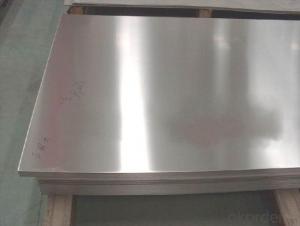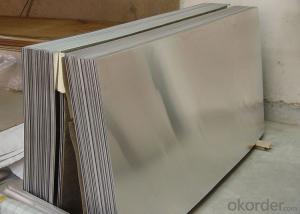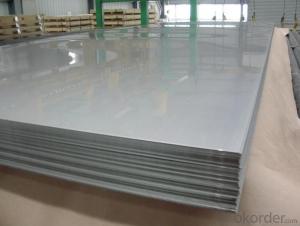Customized Cold Rolled Aluminum Sheet Metal
- Loading Port:
- Shanghai
- Payment Terms:
- TT OR LC
- Min Order Qty:
- 2.5
- Supply Capability:
- 5000 m.t./month
OKorder Service Pledge
OKorder Financial Service
You Might Also Like
l Product Introduction
Aluminum sheet is also known as Treadplate, Floor Plate, Chequer Plate, Checkered Plate, Chequered Floor Plate, Checker Plate and Check Plate. It is made of anti-corrosion aluminum alloy stock, rolled with special and beautiful embossing shape. It has the property of anti-sliding, anti-corrosion, easy cleaning and high mechanical strength.
l Specification
| Alloy | Temper | Gauge(mm) | ||
1000 series
| H14/H24 | Thickness | Width | Length |
| 0.2-6 | 600-2650 | 2000-1600 | ||
l Packaging & Delivery
Packaging detail: wooden cases that are suitable for long distance exporting
Delivery detail: 25-30 days after receiving L/C or payment in advance
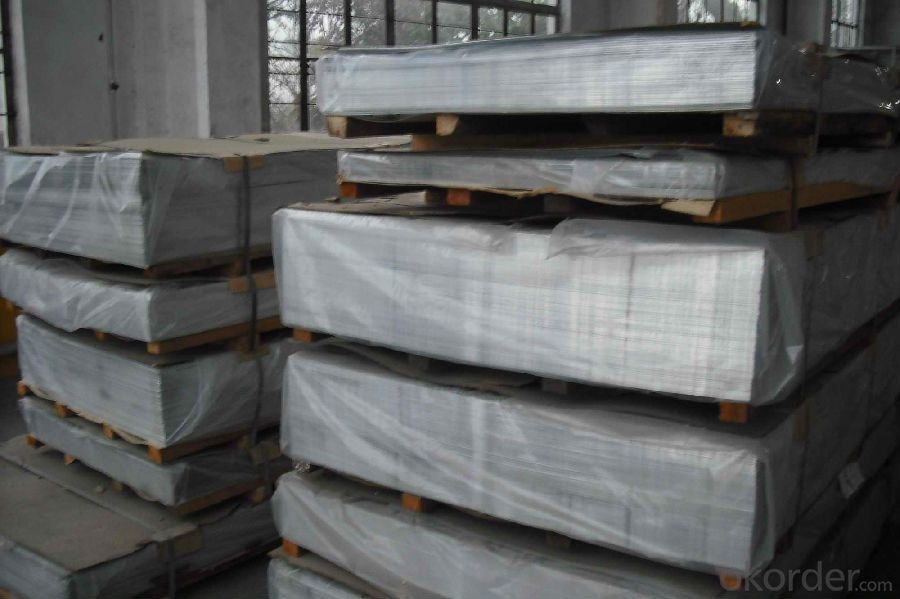
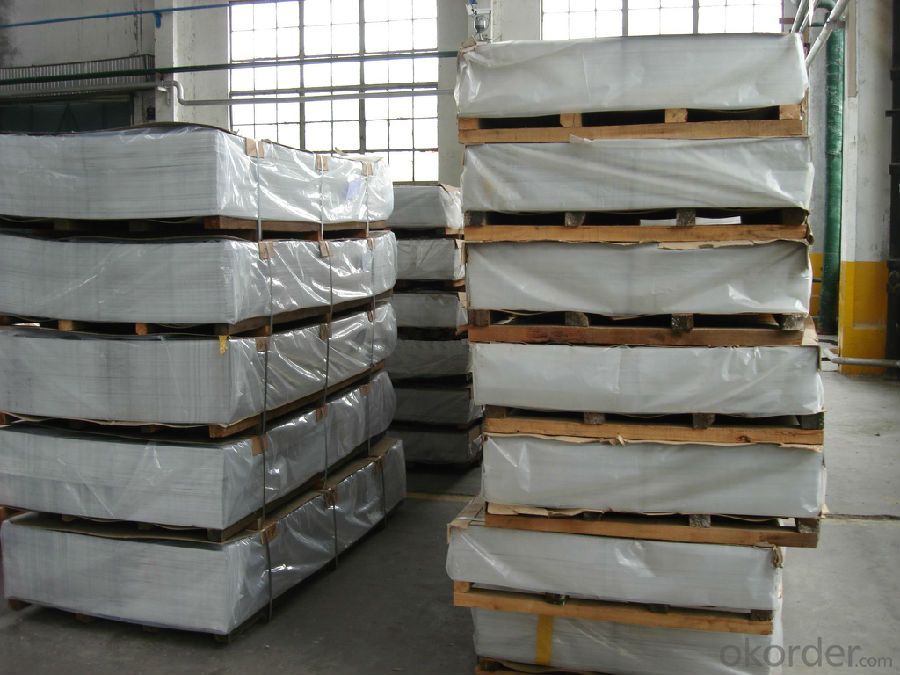
l Company Profile
CNBM International Corporation, China National Building Materials (Group) Corporation, is one of the largest companies in China building material & equipment industry, with 42,800 employees and sales in 2005 of US Dollar 4.395 billion. In 2006, China National Building Material Company Limited was listed on Hong Kong Stock Market with the stock code as 3323.
The business scope of CNBM covers from manufacturing and sales of a series of building materials to scientific research and design, import and export trade. In many of these fields, CNBM is playing the leading role.
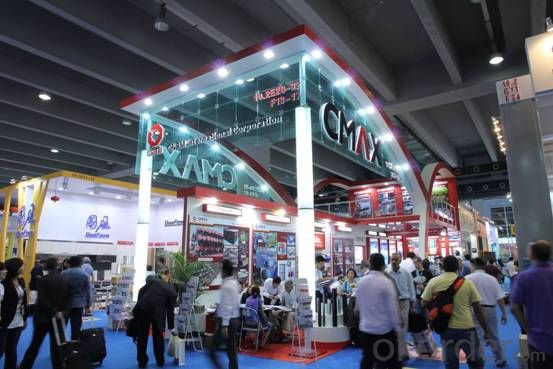
l CNBM World Wide

l Product Images
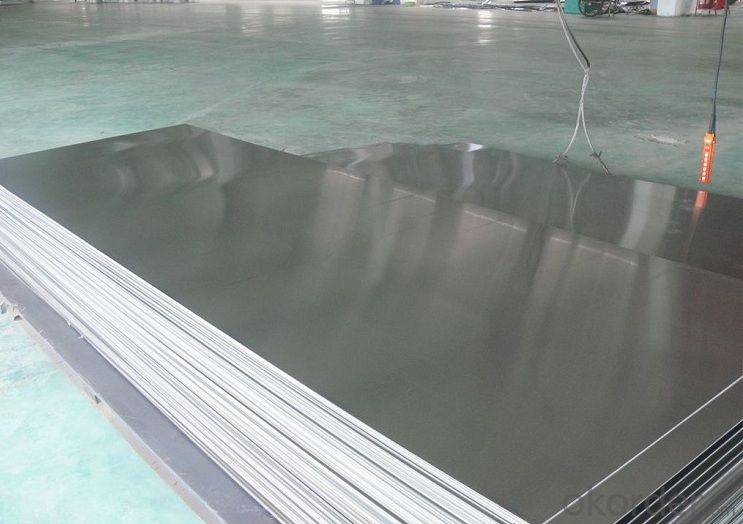
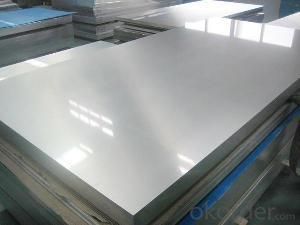
l Certificates
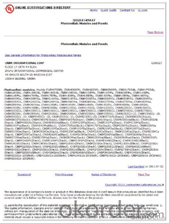
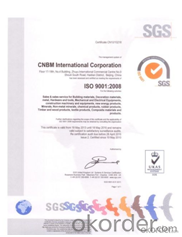
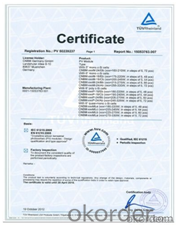
l FAQ
Q: Do you provide free samples?
A: Yes, free samples will be sent to you on freight at destination.
Q: Can I get your latest products catalogue?
A: Yes, it will be sent to you in no time.
Q: What is the MOQ?
A: 2.5 tons
Q: What are your payment terms?
A: We accept L/C, T/T.
- Q:I've heard certain eyeliners contain lead and that it's a harmful (cancerous) ingredient. I use Urban Decay's 24/7 eyeliner and on the box it says it contains aluminum powder. Is that another word for lead? If not, is aluminum powder harmful too? Thanks!
- no aluminum powder is not lead. There is some lead in various cosmetics, and these would be impurities of 1 part to 1,000,000 (ppm). If you are in the US, there are documentation on cosmetics and lead for the US. www.fda /Cosmetics/ProductandI... www.fda /ForConsumers/Consumer...
- Q:How does the surface treatment affect the corrosion resistance of aluminum sheet?
- The surface treatment of aluminum sheet plays a significant role in enhancing its corrosion resistance. Aluminum is inherently corrosion-resistant due to the formation of a thin oxide layer on its surface. However, this oxide layer is not always sufficient to protect the metal from aggressive environments or harsh conditions. Surface treatments such as anodizing, chromating, or painting can provide an additional protective layer on the aluminum sheet, significantly improving its corrosion resistance. Anodizing involves creating a controlled oxide layer on the surface of the aluminum through an electrochemical process. This layer is highly resistant to corrosion, offering excellent protection against various corrosive agents. Chromating, on the other hand, involves the application of a chromate conversion coating, which forms a thin film on the aluminum surface. This coating acts as a barrier, preventing corrosive substances from reaching the metal and causing oxidation. It also enhances the adhesion of subsequent paint or adhesive layers. Painting is another commonly used surface treatment for aluminum sheets. The application of a paint layer not only protects the metal from corrosion but also provides an aesthetic finish. The paint acts as a physical barrier that shields the aluminum from moisture, chemicals, and other corrosive elements. The choice of surface treatment depends on the specific application and the level of corrosion resistance required. Anodizing is often preferred for aluminum sheets used in construction, automotive, and aerospace industries, as it provides excellent corrosion protection and improves the appearance of the metal. Chromating is commonly used in electrical and electronic applications, as it offers both corrosion resistance and electrical conductivity. Painting is suitable for applications where aesthetics and corrosion protection are equally important, such as architectural elements or consumer products. In conclusion, the surface treatment of aluminum sheet significantly affects its corrosion resistance. Anodizing, chromating, and painting all contribute to enhancing the protective properties of aluminum against corrosion, thereby extending its lifespan and ensuring its durability in various environments.
- Q:What are the typical uses or applications for 101 aluminum sheets?
- 101 aluminum sheets are commonly used in a variety of applications due to their unique properties. Some typical uses for 101 aluminum sheets include: 1. Automotive industry: 101 aluminum sheets are widely used in the automotive industry for manufacturing vehicle bodies, panels, and other components. Their lightweight nature, corrosion resistance, and high strength-to-weight ratio make them ideal for improving fuel efficiency and reducing overall vehicle weight. 2. Construction industry: These aluminum sheets are extensively used in construction projects for roofing, cladding, and facades. They provide excellent durability, weather resistance, and easy formability, making them suitable for various architectural applications. 3. Packaging industry: 101 aluminum sheets are commonly used in the packaging industry for manufacturing cans, containers, and foils. Their malleability and ability to retain the freshness and quality of food make them a preferred choice for packaging perishable goods. 4. Electrical industry: Due to their excellent conductivity and low electrical resistance, 101 aluminum sheets are frequently used in the electrical industry for manufacturing power transmission lines, bus bars, and electrical enclosures. They offer superior heat dissipation properties, making them ideal for applications requiring efficient heat transfer. 5. Marine industry: The corrosion-resistant properties of 101 aluminum sheets make them suitable for marine applications. They are often used in boat building, shipbuilding, and offshore structures, as they can withstand the harsh saltwater environment without significant degradation. 6. Aerospace industry: 101 aluminum sheets find extensive use in the aerospace industry for manufacturing aircraft components such as wings, fuselages, and structural parts. Their lightweight nature and high strength make them crucial for reducing the overall weight of aircraft and increasing fuel efficiency. 7. Household appliances: These aluminum sheets are commonly used in the manufacturing of household appliances like refrigerators, air conditioners, and cookware. Their thermal conductivity, durability, and resistance to corrosion make them suitable for various applications in the home. Overall, 101 aluminum sheets have a wide range of uses and applications across various industries due to their exceptional properties, including lightweight, corrosion resistance, durability, and formability.
- Q:How does the grain structure of aluminum sheet affect its properties?
- The grain structure of aluminum sheet plays a significant role in determining its properties. The grain structure refers to the arrangement of individual aluminum crystals, also known as grains, within the sheet. The size, shape, and orientation of these grains can influence various mechanical and physical properties of the aluminum sheet. For instance, the grain structure affects the sheet's strength, ductility, hardness, and even its corrosion resistance. In terms of strength, a fine-grained aluminum sheet tends to have higher strength than a coarse-grained one. This is because the presence of smaller grains allows for more grain boundaries, which act as obstacles to dislocation movement and enhance the material's resistance to deformation. On the other hand, a coarse-grained structure has fewer grain boundaries, leading to reduced strength. Furthermore, the grain structure affects the sheet's ductility, which refers to its ability to deform without fracturing. Aluminum sheets with finer grains typically exhibit better ductility as the numerous grain boundaries hinder dislocation motion and prevent crack propagation. In contrast, coarser grains tend to promote crack propagation, resulting in reduced ductility. The hardness of aluminum sheet is also influenced by its grain structure. Generally, a fine-grained structure contributes to higher hardness due to increased dislocation density and grain boundary strengthening. Conversely, a coarse-grained structure leads to reduced hardness as there are fewer obstacles to dislocation motion. Moreover, the grain structure affects the sheet's corrosion resistance. Fine-grained aluminum sheets tend to have improved corrosion resistance compared to coarse-grained ones. This is because the presence of more grain boundaries in fine-grained structures impedes the movement of corrosive agents, thus reducing the likelihood of corrosion. In summary, the grain structure of aluminum sheet significantly impacts its properties. Fine-grained structures generally enhance strength, ductility, hardness, and corrosion resistance, while coarse-grained structures tend to have the opposite effects. Therefore, controlling and optimizing the grain structure during the manufacturing process is crucial in achieving the desired properties of aluminum sheet for various applications.
- Q:What are the environmental benefits of using aluminum sheets?
- There are several environmental benefits associated with using aluminum sheets. Firstly, aluminum is a highly recyclable material, meaning that it can be recycled repeatedly without losing its quality or properties. This reduces the need for mining and extraction of new aluminum ore, which can contribute to deforestation, habitat destruction, and water and air pollution. Recycling aluminum sheets also requires significantly less energy compared to producing new ones, resulting in reduced greenhouse gas emissions and a smaller carbon footprint. Additionally, aluminum sheets are lightweight, which makes them a more sustainable alternative to other materials such as steel or plastic. The use of aluminum sheets in various industries, such as automotive and aerospace, can help reduce the overall weight of vehicles and aircraft, leading to improved fuel efficiency and lower emissions. This is particularly important in the context of climate change and the need to reduce our dependence on fossil fuels. Furthermore, aluminum is corrosion-resistant, durable, and long-lasting, making it a sustainable choice for various applications. Its durability reduces the need for frequent replacements, thereby reducing waste generation. Moreover, aluminum sheets can be used in construction to improve insulation, leading to energy savings and reduced greenhouse gas emissions. Lastly, aluminum is non-toxic and does not release harmful pollutants during its production or use. This makes it a safe material choice for various applications, including food packaging and medical equipment. In summary, the environmental benefits of using aluminum sheets include its recyclability, lightweight nature, energy efficiency, durability, and non-toxicity. By choosing aluminum sheets over other materials, we can contribute to reducing resource extraction, energy consumption, greenhouse gas emissions, and waste generation, while promoting a more sustainable and environmentally friendly future.
- Q:Don't you know how you can grind a pair of scissors along a piece of paper to make it curly? Would that work with aluminum foil? I have to make a sculpture for my 3D class and I need to know if this would work before I go off and buy any.
- yes is it possible to make a ribbon out of aluminum foil if it is should i use the shiny or matte side for further ribbons out aluminum foil detail see here:
- Q:Can the aluminum sheets be bent or formed into different shapes?
- Aluminum sheets possess the remarkable ability to undergo effortless bending and shaping procedures. Displaying exceptional malleability, aluminum is capable of being manipulated with utmost ease, devoid of any risk of fracturing or shattering. This unique characteristic renders it a perfect choice for diverse applications that necessitate adaptability and tailored specifications. Employing an assortment of methodologies including press brakes, rollers, and specialized forming tools, aluminum sheets can be flexed, folded, rolled, or formed effortlessly. Such remarkable versatility enables the fabrication of intricate shapes and structures, rendering aluminum an immensely favored option in sectors like construction, automotive, aerospace, and manufacturing.
- Q:Aluminium magnesium alloy plate, 5052 aluminium plate, 5005 aluminium plate. 5252 aluminum plate performance and use
- Aluminum magnesium alloy aluminum sheet, also known as 5 * * * series aluminum alloy plate, which represents 5052 aluminum plate, 5005 aluminum plate, 5083 aluminum plate, 5754 aluminum plate, 5A02l aluminum plate, 5A05 aluminum plate and so on. The alloy elements of aluminium magnesium alloy aluminum plate are mainly magnesium, and the magnesium content is between 3-5%. The main characteristics are low density, high tensile strength and high elongation. In the same area, the weight of Al Mg alloy is lower than other series. It is often used in aviation, such as aircraft fuel tanks. It is also widely used in conventional industries. The processing technology is continuous casting and continuous rolling, belonging to the hot rolled aluminum plate series, so it can be oxidized deep processing. In our country, the 5 * * * series aluminum plate is one of the more mature aluminum plate series.
- Q:Can aluminum sheets be bent into complex shapes?
- Yes, aluminum sheets can be bent into complex shapes due to their malleability and ductility. With the appropriate tools and techniques, aluminum sheets can be formed into intricate and customized designs, making them versatile for various applications.
- Q:What is the typical weldability of aluminum sheets?
- The typical weldability of aluminum sheets is considered to be excellent. Aluminum is known for its high weldability due to its low melting point and thermal conductivity. It can be easily joined using various welding techniques such as TIG (tungsten inert gas), MIG (metal inert gas), and even spot welding. The weldability of aluminum sheets is further enhanced by the use of filler materials specifically designed for aluminum welding. However, it is important to note that the weldability can vary depending on the alloy composition, thickness, and surface condition of the aluminum sheet.
1. Manufacturer Overview |
|
|---|---|
| Location | |
| Year Established | |
| Annual Output Value | |
| Main Markets | |
| Company Certifications | |
2. Manufacturer Certificates |
|
|---|---|
| a) Certification Name | |
| Range | |
| Reference | |
| Validity Period | |
3. Manufacturer Capability |
|
|---|---|
| a)Trade Capacity | |
| Nearest Port | |
| Export Percentage | |
| No.of Employees in Trade Department | |
| Language Spoken: | |
| b)Factory Information | |
| Factory Size: | |
| No. of Production Lines | |
| Contract Manufacturing | |
| Product Price Range | |
Send your message to us
Customized Cold Rolled Aluminum Sheet Metal
- Loading Port:
- Shanghai
- Payment Terms:
- TT OR LC
- Min Order Qty:
- 2.5
- Supply Capability:
- 5000 m.t./month
OKorder Service Pledge
OKorder Financial Service
Similar products
New products
Hot products
Related keywords
